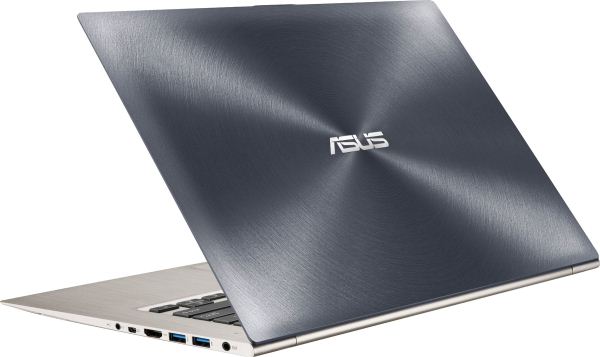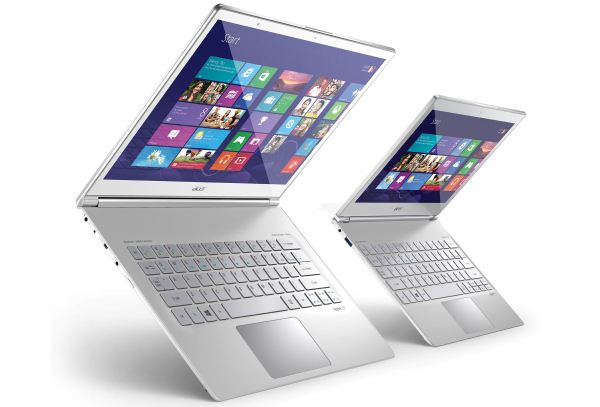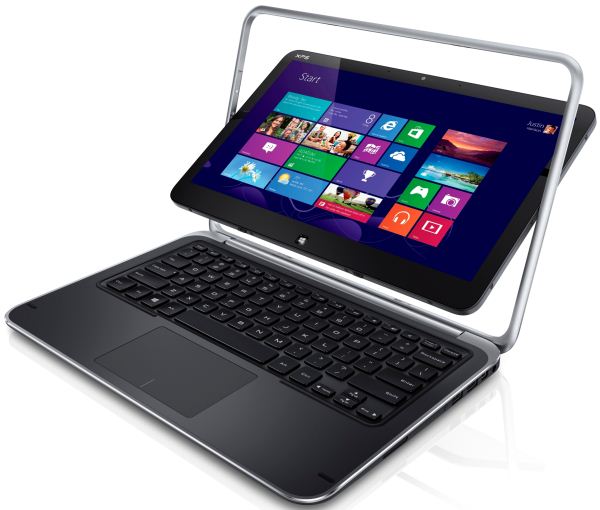Holiday 2012 Ultrabook and Ultraportable Guide
by Jarred Walton on December 12, 2012 4:00 AM ESTHigh-End Ultrabooks
Wrapping things up, we enter the final category of Ultrabooks and ultraportables, though these days we’re dealing almost exclusively with the former. In some cases we’re just getting the final high-end components from the previous category (Core i7 and 240/256GB SSDs), but there are a few other extras out there that might be worth the extra money. Let’s start with one of those.
High-End Ultrabook with Gaming Potential
The Acer M5 certainly packs a fairly potent CPU and GPU combination into an affordable package, but the overall quality of some elements is lacking. The display in particular is a sore spot, so what if you could get a similar laptop but with a 1080p IPS display? What you’d end up with is the ASUS UX32VD-DH71. It’s the big brother of the UX32A, which mostly means the display isn’t 1366x768 junk and you get a Core i7 CPU. You also get a GeForce GT 620M GPU, which actually isn’t all that fast, but it’s still probably twice the performance of the HD 4000 and you’re not as apt to throttle the CPU. Because of the design, you can also use standard 2.5” SSDs, making it possible to ditch the 500GB HDD and go for something faster. As noted earlier, Windows 8 is also shipping on the UX32VD now, so if you’re not keen on the new UI consider ClassicShell or Start8 as a good way to fix what MS broke. The UX32VD-DH71 currently sells for around $1300.
Hello 1080p Touchscreens!
At present, there are two 1080p Ultrabooks with touchscreens that I’m aware of, and we have them both in for testing. Each has some perks as well as a few quirks, so both are worthy of consideration.
Acer Aspire S7
I have to say, the first time you see the Aspire S7, you’ll very likely wonder if the Acer logo on the back isn’t a mistake. This is an extremely attractive laptop, and to my knowledge it’s the thinnest laptop anyone has ever shipped—it’s a whopping 0.47” (11.9mm) thick, which is in thick tablet territory! Acer’s 1080p display is good if not exceptional (colors are not anywhere close to accurate, though it’s at least reasonably bright), and you can go for either a Core i5-3317U with a 128GB SSD ($1300) or spend $350 more to get a Core i7-3517U with a 256GB SSD—actually, it’s technically two 64GB SSDs or two 128GB SSDs in RAID 0, which is one of the quirks. Anyway, if the $350 upsell sounds like highway robbery (it is!), we recommend the Core i5 model—95% of the performance, but with half the internal storage. One of the coolest things about both Windows 8 Ultrabooks that I’ve tested is that they can complete a full boot into the OS in about 10 seconds, and with the touchscreens the Windows 8 UI at least makes a bit of sense.
The biggest issues I have with the Aspire S7 (full review forthcoming) are the keyboard and the touchscreen. Starting with the latter, there’s no real issue as such, but reaching across the keyboard to touch the display feels a bit cumbersome. What the S7 needs is a way to turn into an actual tablet, like the Lenovo Yoga on the previous page or the Dell XPS 12 we’ll get to in a moment. You can lay the screen flat (180 degree hinge), but that’s not the same as a tablet. The keyboard is a far more irksome design, unfortunately, at least in my view. You see, I like to use keyboard shortcuts and that means using the function keys; Acer has chopped off the fifth row of keys, merging the function keys with the numbers. There are some other odd key locations as well, but the missing function keys is my biggest complaint. Given enough time I could probably adapt, but every other laptop and keyboard I use has function keys so it still frustrates me.
If Acer does a revised S7 in early 2013, changing the keyboard and creating a real tablet mode need to be at the top of their list. Pricing is also going to raise some eyebrows. I know people spend a lot of money on certain laptop brands, but those are generally business laptops or Apple products. I have a difficult time believing people will pay anywhere near $1300 for the base model S7-391, or $1200 for the 11.6” S7-191, regardless of how nice they look, simply because Acer’s brand lacks the necessary cachet.
Dell XPS 12
If you take all of the interesting points from the Acer S7 and fix the keyboard along with creating a workable tablet mode, you get the Dell XPS 12. This is actually one of the coolest laptops I’ve seen in some time, and while I was concerned about the “flip-screen” aspect holding up long-term when I first saw it, in hand the mechanism feels quite robust. Short of some abuse or an accident, the hinges feel like they’ll last many years. And that’s good, because the flip-screen is really cool. You can use the XPS 12 as a regular laptop, or you can flip the screen 180 degrees and close it, creating a tablet. One thing that’s very obvious is that the XPS 12 is quite a bit thicker than any Android or iOS tablets, but the Core i5/i7 Ivy Bridge processor at its heart is also substantially faster than any of the ARM or Atom parts we’ve seen elsewhere.
Besides the cool factor of the display, the XPS 12 comes in a variety of configurations. The base model has the 12.5" 1080p IPS panel, 4GB RAM, 128GB SSD, and an i5-3317U processor for $1200. Sadly, there’s no 8GB i5-3317U configuration, so the next step up gets you 8GB RAM and an i7-3517U for $1400—a $1250 configuration with just the 8GB RAM upgrade would have been perfect. Moving beyond that point, you can go back to the i5-3317U and get 8GB RAM, but you get a 256GB SSD, all for a starting price of $1500. Finally, there’s the no-holds-barred version that gives you the 8GB RAM, i7-3517U, and a 256GB SSD for $1700. I really like the design of the XPS 12, but the price gouging is enough to make me cry; $200 for a $25 RAM upgrade and a 100-200MHz CPU clock speed increase is laughable, and $200 to upgrade from a 128GB to a 256GB SSD is just as bad. But, if you want what is arguably the coolest Ultrabook around right now, that’s the price of entry.
Wrap-Up
This guide specifically focused on Ultrabooks and ultraportables, which eliminates a huge portion of the mobile market. We’ll look at doing other mobile guides in the coming days that get into the areas we’ve missed, including gaming laptops, other budget offerings, and even tablets. For now, we’ve listed about a dozen laptops that we could recommend for various reasons. Not every laptop would be a good fit for every person, but if you want something that’s easy to carry around—either for work, school, or some other reason—you should have several worthy options to consider. What did we miss, or do you have a converse opinion on any of our recommendations? Let us know in the comments!













77 Comments
View All Comments
Impulses - Wednesday, December 12, 2012 - link
Many models are only around $1,000 and most $500 laptops have anemic battery capacities... The comparison isn't lopsided enough to make an ultrabook a universal bad value. You'll never find a 1920x1080 IPS display on a $500 laptop either. Now if you have other performance needs then you should obviously take that into consideration, your needs aren't the same as everyone's tho.sigmatau - Wednesday, December 12, 2012 - link
Most $1,000 ultrabooks don't have a 1920x1080 IPS display either.You are basicaly paying an extra $500 for a laptop shell. What do you get for the extra $500? A slower computer with similar or worse battery life.
Where do I sign up?
I said this since ultrabooks came out. I am not paying $500 for a laptop shell.
mrdude - Wednesday, December 12, 2012 - link
They're just thinner... and that's it.Current Ultrabooks are nothing more than netbooks with a metal shell. The issue isn't so much ultrabooks than it is the alternatives to ultrabooks. You can buy a 3.2lb Toshiba R935 with better internals for roughly the same price. Unlike Ultrabooks, it gives you full access to its internals and has a replaceable battery.
I'm surprised the X230 wasn't listed here. I'd take that any day of the week over an Ultrabook.
EnzoFX - Wednesday, December 12, 2012 - link
It's called build quality, maybe you don't understand that concept. I'm not saying it's worth $500 to everyone, but it's worth something to everyone. Some people buy in sooner than others as prices make their way down. It's pretty simple right?I for one can't stand those cheap, huge laptops that last 2 years tops.
mrdude - Wednesday, December 12, 2012 - link
Build quality? You mean those Ultrabooks made of plastic that cost more laptops with better internals? That build quality?Think about what you're giving up and getting for thinner here:
- A CPU that throttles under load, either on the CPU or GPU side, because of TDP constraints and thermal issues.
- Higher price because reasons.
- non-replaceable battery. If you use your laptop as a daily driver that means you're going to have to replace the battery in about 2-3 years.
- Soldered RAM. We all know how much us tech geeks love soldered RAM.
- High price for worse performance. If ULV chips sold for 2/3 the price of 35W cousins I'd be okay with that, but they don't.
And are they any lighter? Are they any quicker? Is the build quality any better? No, no, and nope.
My X220 with a 9-cell battery goes for 12 hrs on a charge, can be tinkered with all I please, and has a great matte display, all at just over 3lbs. Build quality? It's a ThinkPad.
kyuu - Wednesday, December 12, 2012 - link
Except they're usually not slower outside of graphics performance (and are often faster in most tasks due to the inclusion of SSDs instead of 5400RPM laptop HDDs).Also yeah, you're paying more for better build quality -- if build quality isn't important to you, then feel free to pick from the many choices for cheaply made laptop shells. No one is stopping you.
mrdude - Wednesday, December 12, 2012 - link
Jarred has done an article on this already. The GPU in an Ivy ULV with throttle under load due to TDP constraints. It results in stuttering and can be significant depending on the title. I've witnessed this myself.To boot, a lot of Ultrabooks suffer from CPU throttling due to heat as well.
You can also buy laptops with SSDs. The point here is that unlike Ultrabooks, you can actually do this yourself.
And I'd put my X220 against any Apple product when it comes to build quality. Steel hinges, great ventilation, magnesium roll cage and rubberized finish so it doesn't slip out of your hand. Throw in the spill resistant keyboard and sturdy nature of the product and you've got yourself some great build quality.
If you're comparing $500 laptops to $800 Ultrabooks then I don't know what to tell you.
blkle - Saturday, December 15, 2012 - link
Ultrabook is for mobility, to work anywhere with light weight. If it's about gaming, I would rather choose desktop setup than a gaming laptop.Laptop is for mobility, ain't for high performance.
designerfx - Wednesday, December 12, 2012 - link
the phrase is "just because you can, doesn't mean you should".The phrase does tend to apply to ultrabooks.
Flunk - Wednesday, December 12, 2012 - link
I actually bought an XPS 14 ultrabook, I had huge problems with the screen and Wi-Fi. The performance also wasn't great. I returned it and bought an Alienware m14x and all my problems went away. Sure it's heavier, but it will do what I need it to.Ultrabooks are good enough for a lot of things, but if you're a power user, they're not quite ready for prime time. I think they're mostly for people to use as a second machine.